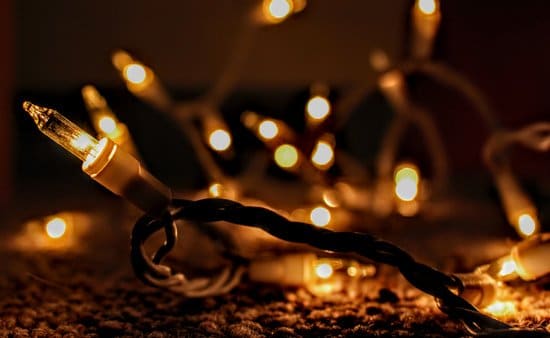Author, Sheryl Turner, is a grant writer for Nenana Volunteer Fire/EMS Department in Alaska and a member of the National Volunteer Fire Council.
Hi, Everyone…This past weekend we spent quality time with our Goddaughter and her family in Carlsbad, California. My husband and I live in Alaska, and our Goddaughter and her family live in Arizona. Best place to meet? Carlsbad works every time. Like many, we were celebrating the Holidays, enjoying being together and telling stories from years gone by. One of the subjects that came up was how decorating for the Holidays has changed over the years. This year, especially, we noticed that some stores started as early as October, just before or after Halloween, setting up Christmas displays and selling artificial trees! It surprised some of us that families seem to have also started decorating their Christmas trees a lot sooner than they have in past years.
As we drove around San Diego, La Jolla, and Carlsbad, California, we could not believe how many lights we saw. I told the kids that when my husband and I left Indiana last Thursday night, December 5th, I had never seen so many houses decorated, inside and out, this early in the season. The one thing that really surprised us, was how many people are using a traditional real pine tree, while others have elected to use an artificial tree.
As we discussed differences in the use of traditional or an artificial tree, our conversation shifted to sharing our thoughts on lights and decorations. Seeing that my husband and I have a law enforcement background and are now volunteers with the Nenana Volunteer Fire/EMS Department in Nenana, Alaska, and our Goddaughter’s family is with the Yuma, Arizona Fire Department, and the Department of Law Enforcement and Security at United States Army Proving Ground in Yuma, Arizona, it did not take long for our conversation to shift and stay on the home fires caused by Christmas trees, and discuss tips and reminders that may help keep this year a safe and fire-free Holiday Season.
Our Goddaughter and I did some research online to see how many home fires are actually caused by faulty wiring, bad light bulbs, etc. (NFPA.org has really good information and Background Information). We checked various sights and compared the information. Overall, they all agree:
- Between the years of 2013-2017, U.S. Fire Departments responded to an average of 160 home fires per year that started with the Christmas trees. These fires caused an average of three deaths, fifteen injuries, and $10 million in direct property damage annually.
- On the average of every 52 reported, home fires began with a Christmas tree, resulted in a death. Compared to an average of one death per 135 total reported home fires.
- Electrical distribution or lighting equipment was involved in 44% of home Christmas tree fires.
- In 25% of the Christmas tree fires, a fire started because, some type of heat source, such as a candle or equipment was too close to the tree.
- Approximately 1/5 (21%) of Christmas tree fires were intentional.
- Roughly ¾ of Christmas tree fires occurred in December or January.
- Two of every five (39%) home Christmas tree fires started in the living room.
Although we are well into the 2019 Holiday Season, we still need to remember fires do not start themselves. Remembering a few simple tips about protecting your home and family, and possibly your local firefighters, is a great place to start:
- Place Your Christmas Tree in a Safe Place: Make sure when you put up your tree, it is at least three feet away from any heat sources, like radiators, fireplaces, and heating vents.
- Check Light Strands Before Putting Them on the Tree – Before you begin decorating, make sure the wires on your lights are not frayed. Check each strand and replace lights for cracked, chipped, or unlit bulbs. Make sure the lights are working correctly.
- Lights Out – Always turn the Christmas lights off before you go to bed.
- Plug No More Than Three Strings of Lights into One Plug – Plugging in more than three sets of Christmas lights into a single extension cord can be dangerous. Doing so may cause problems with overheating. However, it depends on both the strand’s wattage and the maximum watt capacity of the plug. If you are unsure of how to check the wattage, you can use a power strip with a built-in circuity breaker instead of your wall outlet.
- LED Lights – If lights you are using are getting too hot, substitute and use LED Lights. They are not as hot as the traditional lights.
- Hydrate Your Tree – It is important to keep your Christmas tree hydrated. Remember, other than overheated Christmas lights, fires are also caused by dry Christmas trees. A dry tree will be more flammable compared to the one that’s been properly watered. If you prefer a real Christmas tree, make sure you check the water every day to prevent the tree from drying out. However, if you’re not too attached to a real Christmas tree, it’s actually safer to purchase an artificial Christmas tree made from fire-resistant materials.
- Take Your Tree Down – Don’t keep your Christmas tree up for very long. Once the needles begin to fall, the tree becomes at more risk of a fire starting.
- Outdoor and Indoor Lights – Use outdoor lights outside and indoor lights inside. Christmas lights are labeled by their use, so you’ll notice a disclaimer that reads “for indoor use only” or “for indoor and outdoor use.” Make sure you read this carefully as indoor-only Christmas lights cannot be used for the outdoors. Indoor-only lights aren’t insulated like outdoor lights and won’t work with moisture from the outdoors. In fact, if indoor lights are exposed to water, snow or any other outdoor element, they could possibly become hazardous.
- Use of Ladders – Since falls are the highest emergency room-related injury during the holidays, it’s important to know how to safely use a ladder when hanging Christmas lights off the roof of your home or in any other space that would require a ladder. Have a spotter with you at all times to hold the ladder for stability. When hanging Christmas lights, never extend your body further than parallel with the ladder to prevent tipping. Consider a wooden or fiberglass ladder when you’re working with Christmas lights to prevent an electric shock.
- Use Christmas Light Clips, instead of nails or screws, when hanging outdoor Christmas lights on your roof. Don’t use nails or screws to secure the lights as they can puncture the wires, causing the lights to malfunction, or worse, shock the person installing them. Instead, opt for light clips found at any hardware store to secure the lights onto the house. The light clips are safer for the Christmas lights and will cause less damage to your roof, compared to nails or screws.
- Need to Use an Extension Cord ? – If you need to use an extension cord or have a long strand of lights between your Christmas tree and outlet, make sure you secure all loose light strands with electrical tape to avoid tripping and falling. If you have loose light strands outdoors, secure them with ground staples found at any hardware store. Simply place the staple around the light and push as far as you can into the grass or other soft surfaces to secure the cord.
- If you don’t have access to an outdoor outlet, you may find it challenging to light up your home this holiday season. Remember that you can’t run Christmas lights or extension cords through windows or doors. When closed on the light strand, windows and doors can cause wires to break or become frayed from constant pressure, making them a safety hazard for shocks or electric fires.
- Use A GFCI Outlet for Outdoor Lights – There’s a specific outlet used for outdoor Christmas lights called a ground-fault circuit interrupter (GFCI) outlet. It prevents electric shock from electrical – systems that could be exposed to wet conditions, like rain or snow, acting as a circuit breaker. This is especially helpful if your outlet is outdoors. Make sure you protect yourself and your home from electric shorts by purchasing a GFCI outlet. You might need to hire a licensed electrician to install this outlet or you can install it yourself.
- Don’t Forget to Turn Off the Lights – Christmas tree lights should not be left on for prolonged periods of time or overnight. Even LED lights can overheat, and with a combination of a dry Christmas tree, could cause a fire. Make it a habit to turn off your Christmas lights every time you leave the house or go to bed at night. To make it easier, purchase a light timer for your Christmas tree lights and set it to a time to turn off every night and back on the next day. You can also buy a wireless control to shut off your lights through an app on your phone. Not only could this save your home from a fire, but it could also save you money in electricity bills.
- Be Sure to Store Lights Properly Until Next Season – When the holiday season is over, make sure you don’t slack on putting away your decorations. Check the local laws of your city for how long you can keep up your holiday decorations. Some cities will ticket homes who have their holiday decorations up past a certain date. Store all outdoor and indoor Christmas lights in a well-sealed container to prevent water damage and rodent access. Knowing how to properly install and maintain your Christmas lights could save you money in electricity bills, prevent you or a loved one from getting an electric shock and eliminate the chance of a home fire. Follow these tips this holiday season to keep you and your home safe.
We all need to stay aware of what is happening around us. Be observant. Watch for Christmas lights that are not working; something against the cord that could start a fire; animals climbing the Christmas tree and being in danger; leaving lights on when no one is home; not turning lights off before going to bed. Remind our families, colleagues, friends, everyone about the chances of Christmas trees starting a home fire that cannot be stopped. It only takes a spark to start a fire…
My family and I wish you all a very happy and safe holiday.

Grant Writer
Nenana Volunteer Fire/EMS Department
- Graduation – When to Remove Your Child from Your Auto Policy - May 18, 2023
- How to Prevent Catalytic Converter Theft - May 17, 2023
- How Much Does Home Insurance Cost? - May 17, 2023

